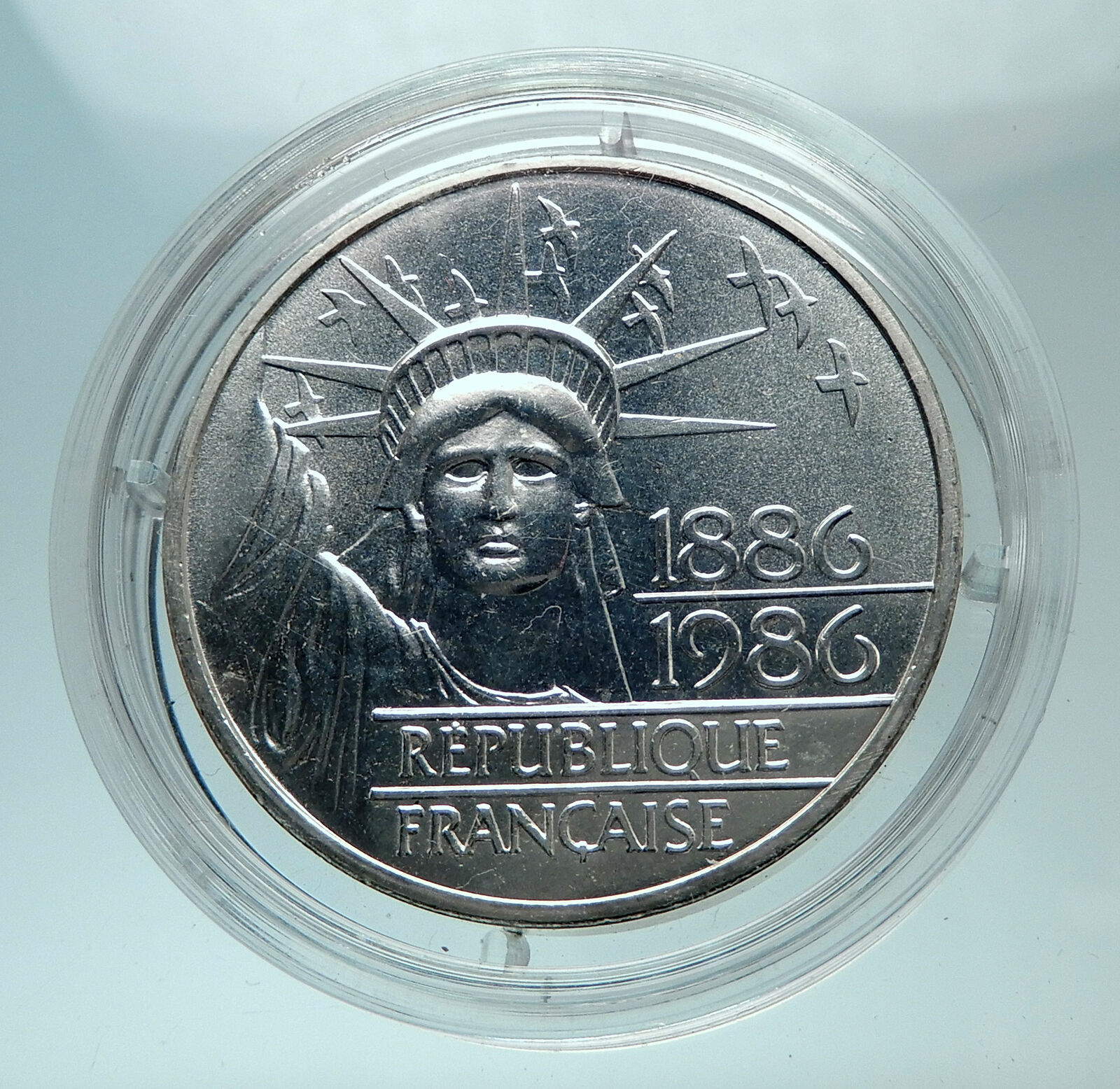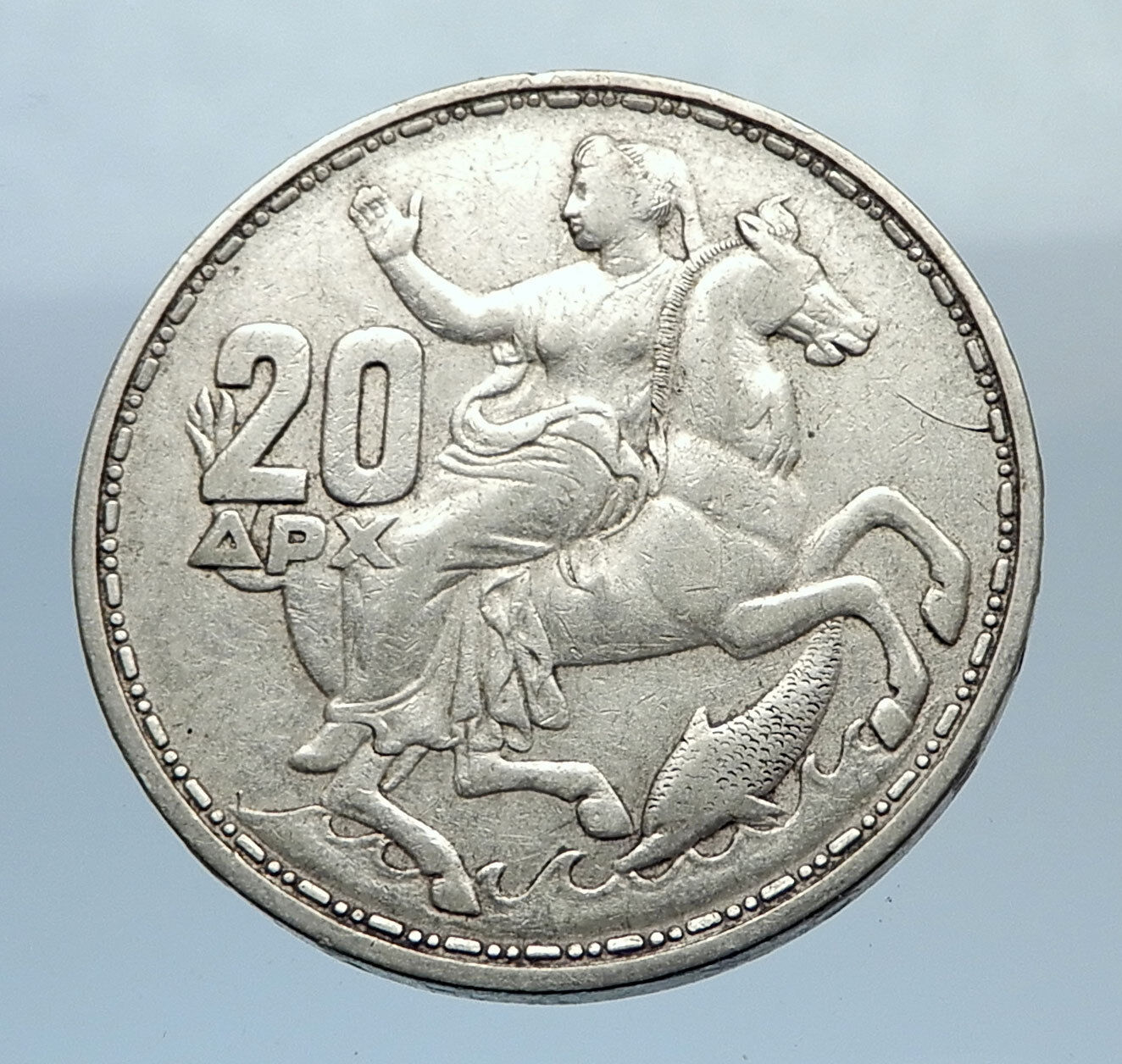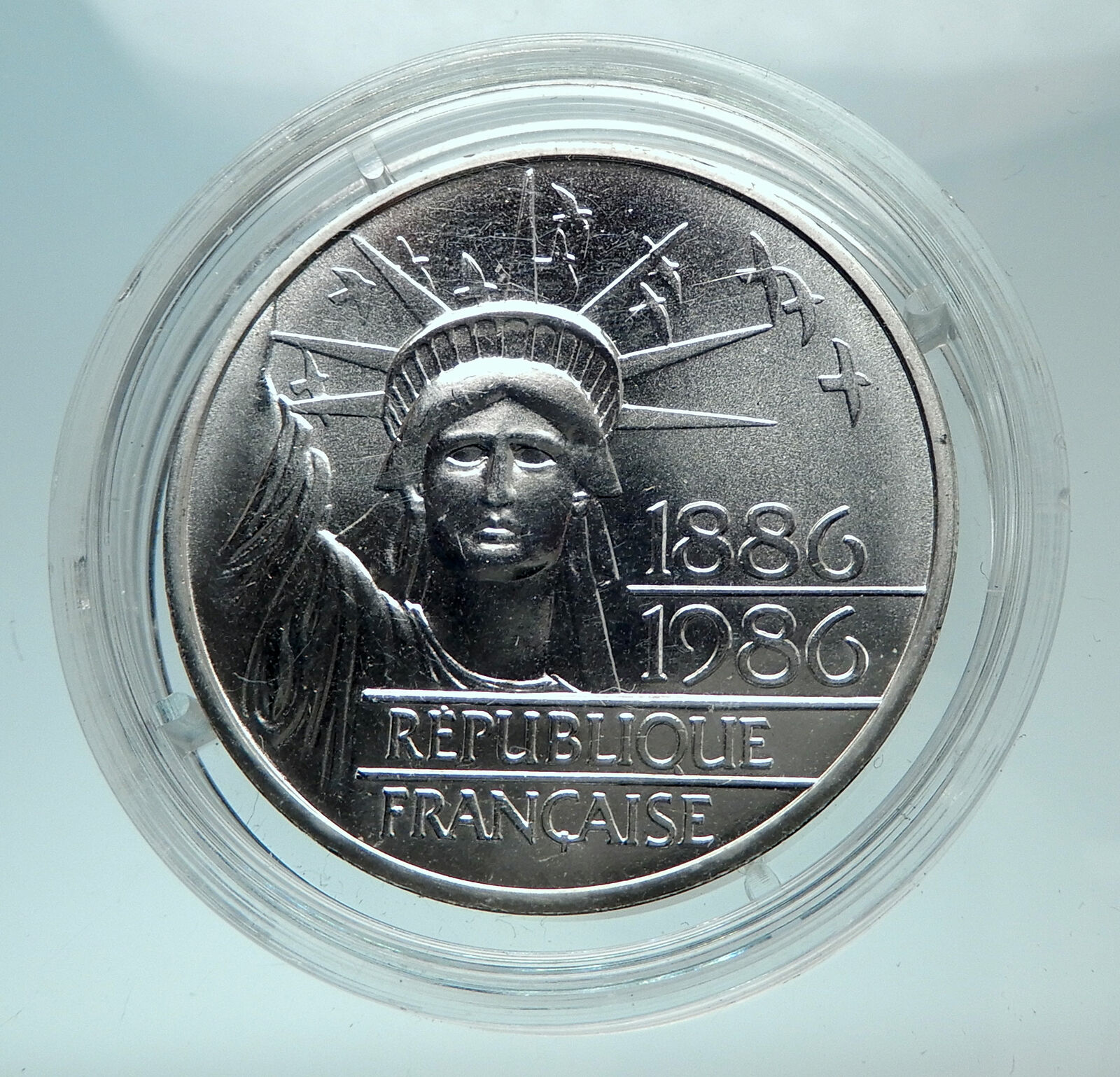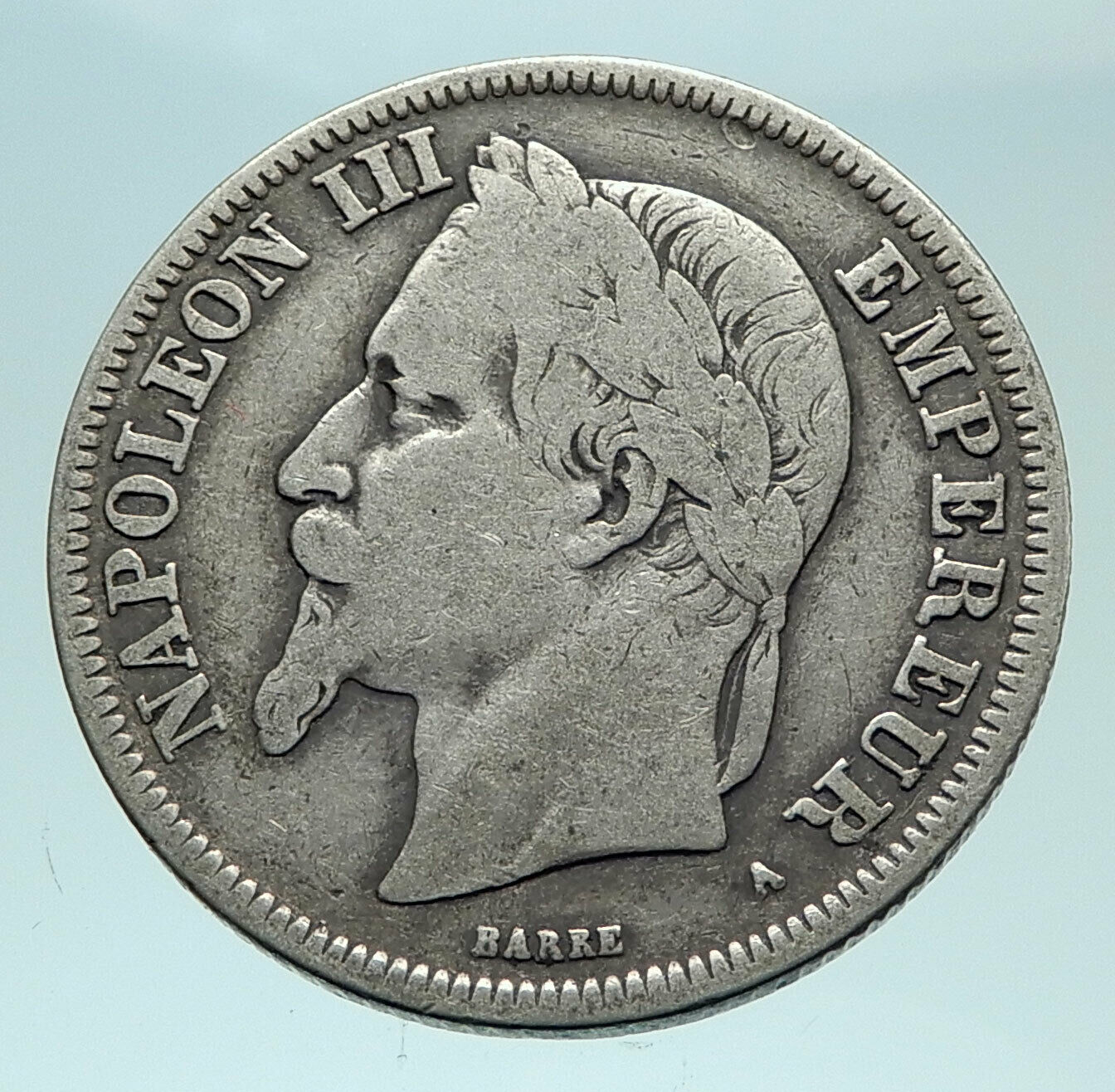|
France – Provincial – Lorraine (Duchy)
Duke of Lorraine – Leopold (Leopold Joseph) 18 April 1690 – 27 March 1729
1713 Silver Teston 27mm (8.16 grams)
Reference: N# 33781 References Bd# 1576, KM# 95
LEOP·I·D·G·D · LOT·BA·REX·IER, Bareheaded bust of duke facing right.
IN·TE·DOMINE SPERAVI·1712· , Crowned cross of Jerusalem.
Coin Notes:
It was common practice to strike this type over earlier types of teston. During Leopold’s reign, the value of the gold and silver coins was constantly changing. According to deSaulcy (p.197), this teston was valued by an ordinance of Nov. 17, 1710 at 28 sous (1.4 livres). By an ordinance of March 18, 1714, the value of newly struck testons would be 25 sous, six deniers (1.28 livres). By an ordinance of December 28, 1715 1 livre one sous (1.05 livres).
You are bidding on the exact item pictured, provided with a Certificate of Authenticity and Lifetime Guarantee of Authenticity.
 Leopold the Goodod (11 September 1679 – 27 March 1729) was Duke of Lorraine and Bar from 1690 to his death. He is the direct male ancestor of all rulers of the Habsburg-Lorraine dynasty, including all Emperors of Austria. Leopold the Goodod (11 September 1679 – 27 March 1729) was Duke of Lorraine and Bar from 1690 to his death. He is the direct male ancestor of all rulers of the Habsburg-Lorraine dynasty, including all Emperors of Austria.
On 30 October 1697, the Nine Years’ War (aka, War of the League of Augsburg) ended with the signing of the Treaty of Ryswick.
The treaty restored the duchies of Lorraine and Bar to the House of Lorraine, as Leopold’s mother had hoped; she died four days later in Vienna. On 17 August 1698, Duke Leopold made a triumphant entry into his capital Nancy. He reconstructed and repopulated his war-stricken duchy, encouraging immigration. At the end of his reign the duchy was safe and prosperous.
In his foreign policy, Leopold tried to further good relations with France and to appease his powerful neighbor. On 13 October 1698 at the Palace of Fontainebleau, Leopold married Élisabeth Charlotte d’Orléans, the niece of Louis XIV, who had offered a dowry of 900,000 livres to the penniless Duke. Elisabeth Charlotte turned out to be a caring mother and gave birth to fifteen children, of whom five survived into adulthood. Three of them died within a week in May 1711 due to a smallpox outbreak at the Château de Lunéville, the country seat of the dukes of Lorraine.
Despite Leopold’s diplomatic attempts, his capital, Nancy, was occupied by foreign troops during the War of the Spanish Succession (1700–1713). Fearing for his family, Leopold relocated the court to the Château de Lunéville, where Leopold rebuilt the castle as the “Versailles of Lorraine”. It was here that his first child Leopold was born in 1700.
In 1703, the Duke introduced the Code Léopold regulating the government of the Duchy. A number of crimes were punishable with death by burning, such as witchcraft, coin forgery, arson, and sexual acts “contrary to nature”. Also, those guilty of aggravated theft of sacred objects from a church could be condemned to be burnt alive. He tried to install his eldest daughter, Elisabeth Charlotte, as Abbess of Remiremont but failed due to the opposition of Pope Clement XI.
Leopold’s marital life was troubled in 1706, when he took Anne-Marguerite de Lignéville, Princess of Beauvau-Craon as his mistress, and enriched her family. Elisabeth Charlotte however, following her mother’s advice, remained silent.
In 1708, Leopold had claimed the Duchy of Montferrat as the closest relative of his cousin, Charles III Gonzaga, erstwhile Duke of Mantua, who had been deposed and then died without male issue. However, the Emperor had already promised Montferrat to the Dukes of Savoy but wishing to compensate the House of Lorraine, he gave the Duchy of Teschen in Silesia to Leopold.
In 1710, Leopold and his wife visited Paris to attend the marriage of Elisabeth Charlotte’s niece Marie Louise Elisabeth to the Duke of Berry, and were among the guests of the lavish banquet at the Palais du Luxembourg. During the visit, Leopold, as a foreign prince, received the style of Royal Highness.
In 1719, Leopold bought the County of Ligny-en-Barrois from his cousin, Charles Henry of Vaudemont. During his reign a new security system was put in place all around Lorraine. He tried to abolish serfdom but the redemption payments were too high for the peasantry, even when Leopold halved it. On New Year’s Eve 1719 he freed his own serfs without redemption, hoping in vain the nobility would follow his example. In 1721, Leopold arranged for his son and heir, Leopold Clement, to receive an education at Vienna. He also intended to forge relations with Archduchess Maria Theresa, the heiress of Emperor Charles VI. However, Leopold Clement died shortly afterwards at Lunéville and in his stead, the younger son Francis Stephen went to Vienna, where he married Maria Theresa. Francis would become Emperor and his descendants, the House of Habsburg-Lorraine, would rule Austria until 1918.
In 1725, Leopold tried to marry off his daughter Anne Charlotte to the young King Louis XV, but Louis Henry, Duke of Bourbon, then prime minister, prevented a union with a descendant of the rival House of Orléans. Then, Elisabeth Charlotte tried to arrange her daughter’s marriage to her first cousin, the recently widowed Louis, Duke of Orléans, but Louis refused. All proposals of marriage being either ignored or declined, Anne Charlotte later became Abbess of the monasteries Remiremont and Essen.
In March 1729, Leopold caught a fever while walking at the Château at Ménil near Lunéville. He returned to Lunéville where he died on 27 March, aged 49.
The Duchy of Lorraine, originally Upper Lorraine, was a duchy now included in the larger present-day region of Lorraine in northeastern France. Its capital was Nancy.
It was founded in 959 following the division of Lotharingia into two separate duchies: Upper and Lower Lorraine, the westernmost parts of the Holy Roman Empire. The Lower duchy was quickly dismantled, while Upper Lorraine came to be known as simply the Duchy of Lorraine. The Duchy of Lorraine was coveted and briefly occupied by the Dukes of Burgundy and the Kings of France.
In 1737, the Duchy was given to Stanisław Leszczyński, the former king of Poland, who had lost his throne as a result of the War of the Polish Succession, with the understanding that it would fall to the French crown on his death. When Stanisław died on 23 February 1766, Lorraine was annexed by France and reorganized as a province.
  France, officially the French Republic (French: République française), is a sovereign state comprising territory in western Europe and several overseas regions and territories. The European part of France, called Metropolitan France, extends from the Mediterranean Sea to the English Channel and the North Sea, and from the Rhine to the Atlantic Ocean. France spans 640,679 square kilometres (247,368 sq mi) and has a total population of 67 million. It is a unitary semi-presidential republic with the capital in Paris, the country’s largest city and main cultural and commercial centre. The Constitution of France establishes the state as secular and democratic, with its sovereignty derived from the people. France, officially the French Republic (French: République française), is a sovereign state comprising territory in western Europe and several overseas regions and territories. The European part of France, called Metropolitan France, extends from the Mediterranean Sea to the English Channel and the North Sea, and from the Rhine to the Atlantic Ocean. France spans 640,679 square kilometres (247,368 sq mi) and has a total population of 67 million. It is a unitary semi-presidential republic with the capital in Paris, the country’s largest city and main cultural and commercial centre. The Constitution of France establishes the state as secular and democratic, with its sovereignty derived from the people.
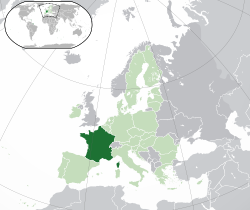
During the Iron Age, what is now Metropolitan France was inhabited by the Gauls, a Celtic people. The Gauls were conquered in 51 BC by the Roman Empire, which held Gaul until 486. The Gallo-Romans faced raids and migration from the Germanic Franks, who dominated the region for hundreds of years, eventually creating the medieval Kingdom of France. France emerged as a major European power in the Late Middle Ages, with its victory in the Hundred Years’ War (1337 to 1453) strengthening French state-building and paving the way for a future centralized absolute monarchy. During the Renaissance, France experienced a vast cultural development and established the beginning of a global colonial empire. The 16th century was dominated by religious civil wars between Catholics and Protestants (Huguenots).
France became Europe’s dominant cultural, political, and military power under Louis XIV. French philosophers played a key role in the Age of Enlightenment during the 18th century. In 1778, France became the first and the main ally of the new United States in the American Revolutionary War. In the late 18th century, the absolute monarchy was overthrown in the French Revolution. Among its legacies was the Declaration of the Rights of Man and of the Citizen, one of the earliest documents on human rights, which expresses the nation’s ideals to this day. France became one of modern history’s earliest republics until Napoleon took power and launched the First French Empire in 1804. Fighting against a complex set of coalitions during the Napoleonic Wars, he dominated European affairs for over a decade and had a long-lasting impact on Western culture. Following the collapse of the Empire, France endured a tumultuous succession of governments: the monarchy was restored, it was replaced in 1830 by a constitutional monarchy, then briefly by a Second Republic, and then by a Second Empire, until a more lasting French Third Republic was established in 1870. By the 1905 law, France adopted a strict form of secularism, called laïcité, which has become an important federative principle in the modern French society.
France reached its territorial height during the 19th and early 20th centuries, when it ultimately possessed the second-largest colonial empire in the world. In World War I, France was one of the main winners as part of the Triple Entente alliance fighting against the Central Powers. France was also one of the Allied Powers in World War II, but came under occupation by the Axis Powers in 1940. Following liberation in 1944, a Fourth Republic was established and later dissolved in the course of the Algerian War. The Fifth Republic, led by Charles de Gaulle, was formed in 1958 and remains to this day. Following World War II, most of the empire became decolonized.
Throughout its long history, France has been a leading global center of culture, making significant contributions to art, science, and philosophy. It hosts Europe’s third-largest number of cultural UNESCO World Heritage Sites (after Italy and Spain) and receives around 83 million foreign tourists annually, the most of any country in the world. France remains a great power with significant cultural, economic, military, and political influence. It is a developed country with the world’s sixth-largest economy by nominal GDP and eight-largest by purchasing power parity. According to Credit Suisse, France is the fourth wealthiest nation in the world in terms of aggregate household wealth. It also possesses the world’s second-largest exclusive economic zone (EEZ), covering 11,035,000 square kilometres (4,261,000 sq mi).
French citizens enjoy a high standard of living, and the country performs well in international rankings of education, health care, life expectancy, civil liberties, and human development. France is a founding member of the United Nations, where it serves as one of the five permanent members of the UN Security Council. It is a member of the Group of 7, North Atlantic Treaty Organization (NATO), Organisation for Economic Co-operation and Development (OECD), the World Trade Organization (WTO), and La Francophonie. France is a founding and leading member state of the European Union (EU).
|





 Leopold the Goodod (11 September 1679 – 27 March 1729) was Duke of Lorraine and Bar from 1690 to his death. He is the direct male ancestor of all rulers of the Habsburg-Lorraine dynasty, including all Emperors of Austria.
Leopold the Goodod (11 September 1679 – 27 March 1729) was Duke of Lorraine and Bar from 1690 to his death. He is the direct male ancestor of all rulers of the Habsburg-Lorraine dynasty, including all Emperors of Austria.
 France, officially the French Republic (French: République française), is a sovereign state comprising territory in western Europe and several overseas regions and territories. The European part of France, called Metropolitan France, extends from the Mediterranean Sea to the English Channel and the North Sea, and from the Rhine to the Atlantic Ocean. France spans 640,679 square kilometres (247,368 sq mi) and has a total population of 67 million. It is a unitary semi-presidential republic with the capital in Paris, the country’s largest city and main cultural and commercial centre. The Constitution of France establishes the state as secular and democratic, with its sovereignty derived from the people.
France, officially the French Republic (French: République française), is a sovereign state comprising territory in western Europe and several overseas regions and territories. The European part of France, called Metropolitan France, extends from the Mediterranean Sea to the English Channel and the North Sea, and from the Rhine to the Atlantic Ocean. France spans 640,679 square kilometres (247,368 sq mi) and has a total population of 67 million. It is a unitary semi-presidential republic with the capital in Paris, the country’s largest city and main cultural and commercial centre. The Constitution of France establishes the state as secular and democratic, with its sovereignty derived from the people.


